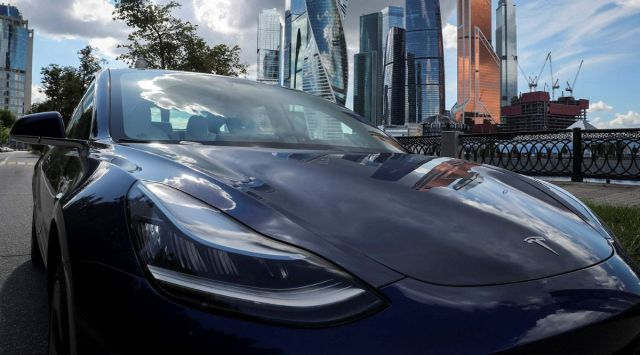Tesla Full Self-Driving: What is it, how it works, and why it’s controversial
Tesla's FSD technology, although far from being fully autonomous, is still revolutionary. Here's everything you need to know about it.
 A Tesla Model 3 electric vehicle is shown in this picture illustration taken in Moscow, Russia July 23, 2020. REUTERS/Evgenia Novozhenina/File Photo
A Tesla Model 3 electric vehicle is shown in this picture illustration taken in Moscow, Russia July 23, 2020. REUTERS/Evgenia Novozhenina/File Photo Tesla has had a tumultuous 2022, driven in part thanks to the antics of its CEO Elon Musk. The company’s share prices have tanked, and now in 2023, it faces a tougher time as questions are being raised around its Full Self-Driving (FSD) technology. Most recently, a senior engineer at the company testified in an ongoing lawsuit that a 2016 video that Tesla used to promote its self-driving technology was staged to show capabilities that the system did not have. There are also questions raised about the naming scheme, which has been termed misleading by some. But exactly is FSD and how does it work? And is Tesla truly close to creating a ‘self-driving’ car? We take a look.
First, what is Tesla FSD?
Tesla’s Full Self-Driving went into wide release back in October 2021 as a beta. While the term isn’t exactly accurate and the cars don’t technically fully drive themselves, the technology still brings along notable upgrades over the autopilot mode most Teslas come pre-installed with. Features under its umbrella include assisted steering on highways and city streets, smart summon, traffic and stop sign control, and autopark.
1. Auto Lane Change: This helps move the car to an adjacent lane on highways
2. Autopark: automatically parks the car in parallel or perpendicular spaces
3. Summon: This allows you to automatically park and retrieve your Tesla while you are standing outside the vehicle. The feature is controlled through the Tesla mobile app or the key fob
4. Smart Summon: This allows you to move Tesla to your location or to a location of your choice, dodging obstacles
There are some more beta features that require even greater vigilance due to their experimental nature. The first is traffic and stop sign control which identifies stop signs and traffic lights in order to slow down/stop the car. Then, there’s Navigate on Autopilot which Tesla describes as “an active guidance feature for Enhanced Autopilot that, with driver supervision, guides a car from a highway’s on-ramp to off-ramp, including suggesting and making lane changes, navigating highway interchanges, and taking exits.”
How does Tesla FSD work?
All Tesla vehicles boast eight cameras and twelve ultrasonic sensors, which capture information from the surroundings and feed it to a powerful computer built into the vehicle. This information contains data about other vehicles on the road, pedestrians, objects, traffic lights, signs, and lanes. The in-built computer processes this information using AI and machine learning and navigates the car accordingly.
What is the pricing and availability of FSD?
Last November, Tesla extended FSD to “anyone in North America who requests it.” It is available on every new Tesla EV, and that includes the Model S, Model Y, Model X, and Model 3. The tech makes use of eight external cameras and twelve ultrasonic sensors that are present on newer Tesla models. In North America, FSD costs $15,000.
Why is Tesla FSD controversial?
One of the reasons why Tesla FSD is controversial is the fact that its name is rather misleading. To someone who’s not familiar with the technology, Full Self-Driving will sound like it takes “full” control of the car and allows the driver to practically sleep behind the wheel – only it doesn’t.
Tesla itself says on its support page that “all Tesla vehicles require active driver supervision and are not autonomous.” However, the company does hope to “achieve a new level of autonomy” as it gains “billions of miles of experience.” In other words, people beta-testing the software are essentially smoothening the rough edges by training it. The software is obviously unfinished and testing it on public roads can be potentially dangerous as several accidents have shown.







